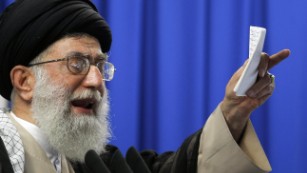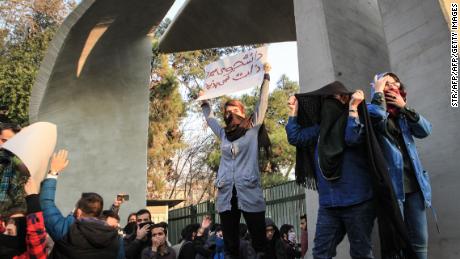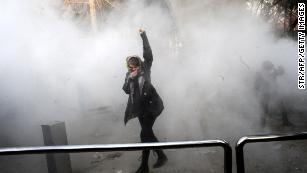What's at play in Iranian protests?
(CNN)The largest public display of discontent in Iran since the 2009 Green Movement has brought about a series of tweets from US President Donald Trump, pushback from the Iranian government and a scene that might have been unfathomable a decade ago -- protesters challenging the rule of Supreme Leader Ayatollah Khamenei.
CNN spoke with several experts about the ongoing unrest in the Islamic Republic of Iran.
Why is this happening?
The protests, which began Thursday night, are a reaction to the sputtering economy, rampant corruption and rising fuel and food prices.
But there's something larger at play.
Iranians are angry, experts say, because they expected life to get better when severe sanctions were lifted after a deal was reached in 2015 between the P5+1 and Iran over its nuclear program. The P5+1 is the five permanent members of the UN Security Council and Germany.
Iran's government warns against 'illegal' gatherings after protests
While restrictions on financial, energy and transportation sectors were removed, hundreds of Iranian entities were not taken off the blacklists. And the United States has moved to create new sanctions over other violations, including a rocket launch this past summer.
Trita Parsi, president of the National Iranian American Council, and other experts say endemic economic mismanagement and corruption have left Iranians disenchanted.
Government policies have brought about higher unemployment and inflation. And there's a lack of sturdy international investment, Parsi added.
"The nuclear deal is overwhelmingly supported by the Iranian public, but there was an expectation that much more economic development would come out of it," Parsi said.
So is this just about bread and gas prices?
No. Years of political, economic and social grievances have driven citizens to the streets in the largest protests since 2009, said Reza Marashi, research director for the National Iranian American Council.
"Economic sanctions have exacerbated all of those Iranian-origin economic problems," he said.
"I don't think you can separate the economic from the political," he told CNN. "The government has an opportunity and a responsibility to address legitimate grievances that are being expressed."
Karim Sadjadpour, a senior fellow at the Carnegie Endowment for International Peace, said there's also a push among citizens to secure equal rights for women.
An Iranian vice president said Saturday the government would work harder to resolve economic hardships.
Are these protests similar to those in 2009?
While the new protests are intense, thus far they are nowhere as big as what occurred in 2009's Green Movement, in which millions took part.
Marashi said this may be more of a civil rights movement than a revolutionary one.

Supreme Leader Ayatollah Ali Khamenei.
There are other distinctions, said Sadjadpour. While the 2009 protests primarily occurred in Tehran, this week's came in government strongholds, such as Qom and Mashhad, known as stout religious centers.
And this wave of protests seems to be a direct challenge to the rule of the Supreme Leader.
"This is something that didn't happen in 2009. This is a huge thing to happen in Iran," said Nic Robertson, CNN's international diplomatic editor. "People don't say that publicly on the streets."
One resident told CNN of witnessing a protester tearing down a poster of Khamenei near Tehran University.
News Courtesy: www.cnn.com












